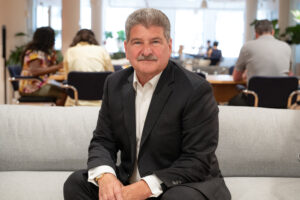Everybody knows that you bury a bad news story by putting it out late on Friday afternoon. If it’s really bad, you might look for a Friday afternoon that is also drowning in other news stories – like, say, the inauguration of a reality-TV star as U.S. president. The news that came out Friday from the Superior Court of Ontario, where Ecuadorian communities are trying to enforce an Ecuadorian environmental judgment against fleeing polluter Chevron Corp., was actually a mix of good and bad. But the bad part was ugly. In the decision, Judge Glenn Hainey excused Chevron’s Canadian subsidiary (Chevron Canada) from the action, holding that it even though it is wholly-owned and controlled by Chevron (through a chain of wholly-owned, non-operational shell companies), it was not an “exigible” asset of Chevron that could be taken to satisfy Chevron’s debt to the Ecuadorians. In what is perhaps the latest flourish in the corporate personhood movement that brought us Citizens United, the court held: “Chevron Canada is not an asset of Chevron. It is a separate legal person. It is not an asset of any other person including its own parent.” Judge Hainey essentially ruled that a multinational fleeing a valid court judgment that hides its assets in a maze of paper subsidiaries can completely insulate itself from paying its obligations, while losing nothing in terms of profit or control. While the Ecuadorian communities who have battled Chevron for 24 years can be trusted to push past this nonsense and find ways to ensure full collection of their judgment, the decision stands as a dangerous precedent for the many other corporate accountability claims that are currently underway in Canadian and other courts. It says to those claims that even if you prevail at the jurisdiction and the merits/liability stages, and even if you sustain your victory on appeal, here is yet another barrier that could prevent you from merely collecting on a successful judgment. The chill this could cast more broadly on efforts to enforce human rights norms is obvious. The Ecuadorians are in Canada, remember, because Chevron pulled all its assets out of Ecuador when it realized it was going to lose after a robust, eight-year environmental damages proceeding. (It lost because the evidence against it was overwhelming: hundreds upon hundreds of open-air oil waste pits that, Chevron cannot deny, were built by its predecessor Texaco as the operator of a concession, and were literally designed to overflow into local waterways and drinking water sources, expressly rejecting along the way common sense environmental measures that, for a few million dollars, would have protected the lives of tens of thousands of people.) Even before the judgment against it was affirmed on appeal and by Ecuador’s Supreme Court, Chevron declared it would never pay (which by itself is illegal and contrary to the rule of law, we should not forget) and instead, with an army of literally thousands of lawyers and operatives, launched a massive demonization campaign to recast of the global public narrative about the case, framing the life-long social justice activists who led the case as a greedy and villainous fraudsters, the affected communities themselves as either “irrelevant” (as Chevron has described them) or criminally complicit, and Chevron itself as the true victim of the whole situation. Sadly, but perhaps not surprisingly, U.S. courts, and the legal media, ate it all up. So the Ecuadorians wind up in Canada, in exercise of their fundamental right to enforce their judgment wherever they choose. (Disabusing Americans and their institutions of the deeply-held belief that a favorite son like Chevron can do no wrong is not water the Ecuadorians have any obligation to carry.) In Canada, the Ecuadorians are not arguing liability—that was already decided in Ecuador. They are simply seeking enforcement against Chevron’s assets in the jurisdiction, namely Chevron Canada. The issue in this context is not the more well-known doctrine of “piercing the corporate veil.” The issue is simply debt collection. Canada has a statute designed to speed the execution of final money judgments, which broadly allows the court “to seize and sell any equitable or other right, property, interest or equity of redemption in or in respect of any goods, chattels, or personal property.” The Supreme Court of Canada has been clear that the law must be interpreted broadly to empower the courts to “facilitate the collection of a debt within the jurisdiction”; the law “calls for assistance, not barriers.” The Supreme Court—in this very case, which already took a trip up there on appeal on almost the same issue—held that a legitimate and “core” aspect of the communities’ case “is for the enforcement of Chevron’s obligation to pay the foreign judgment using the shares and assets of Chevron Canada to satisfy its parent corporation’s debt obligation.” None of the requirements of the corporate veil-piercing doctrine (exercise of dominion and control, abuse such as undercapitalization) are even relevant; the question of what the corporate subsidiary did or didn’t do doesn’t even get asked. The subsidiary is simply an asset of the parent, held (or beneficially owned) by the parent and thus available to satisfy a debt owed by that parent. There isn’t much wiggle-room here, but somehow Judge Hainey avoids what should have been an easy decision in the Ecuadorians’ favor. How exactly he does this is a bit confusing. While he makes the extraordinary claim quoted above, suggesting that subsidiary corporations are not assets even of their direct corporate parents, he never returns to this notion. Ultimately, he appears to rely on the chain of wholly-owned shell companies in various jurisdictions around the world that technically lie between Chevron and Chevron Canada. These are truly paper-only shells without employees, offices, operations, or any other substance; as memorably described by Chevron’s expert witness on its own operations, Chevron’s subsidiary structure “varies literally on a daily basis. . . . we create and dissolve companies constantly.” The law looks past such pass-through forms to the real “beneficial owner” of assets all the time, in countless contexts. And Chevron doesn’t deny that it is the exclusive “beneficial owner” of 100% of Chevron Canada. Hainey throws up a lot of smoke to avoid saying outright that he is embracing Chevron’s use of these unapologetically substance-less shells as a defense to beneficial ownership. He cites a Canadian case for the proposition that a corporation’s “shares confer no right to its underlying assets”—but this is beside the point, because the communities were seeking the shares themselves as the property. It repeats many times that “the Execution Act, which is a procedural statute, does not create any rights in property” and “does not give Chevron any interest, beneficial or otherwise, in the shares or assets of Chevron Canada.” But no statute need give Chevron anything—it already owns (beneficially) the shares; the procedure provided by the Act is all that is needed. Hainey then cites three cases that he claims made findings similar to his: two are completely inapposite, involving either a normal veil-piercing analysis or involving substantive, non-shell companies; the third appears to be an outlier, in which the court in its discretion declined to seize certain subsidiary company accounts, but certainly never laid down any rule saying courts could not do so. The court weakly tries to distinguish the multiple cases cited by the communities where Canadian courts have looked past shell-company formalities to beneficial ownership, finding irrelevant differences or dismissing them based on circular or conclusory reasoning. For example, one case was accurately described by the court as “involv[ing] the enforcement of a recognition order against bank accounts and real property [which was not just held by a shell company, but by an operating charitable foundation] that were determined by the court to be beneficially owned by the judgment-debtor.” But Judge Hainey’s response, in its entirety, is that the case “does not support the plaintiffs’ position that the Execution Act creates substantive property rights.” As just noted, that’s not the plaintiffs’ position. Hainey studiously ignores the fact that the case is directly on-point with respect to beneficial ownership (indeed makes its beneficial ownership finding with citation to the Execution Act). Hainey claims another case is distinguishable because the debtor in that case “had a legally recognized residual interest in the shares,” whereas “Chevron has no legally recognized interest in Chevron Canada’s assets.” This either misleadingly focuses on Chevron Canada assets as opposed to Chevron Canada itself, as already discussed, or is once again conclusory, simply ignoring Chevron’s clear beneficial ownership interest in Chevron Canada itself. It’s a lot of effort to get to a bizarre, unfair, and dangerous result. If companies can completely insulate themselves from having to pay their debts simply by holding assets in meaningless shell companies, then, in the era of Mossack Fonseca, we might as well drop the idea of debt collection entirely, at least for strategically organized multinational corporations. Remember, we are not talking about arguably difficult and policy-laden questions regarding the responsibility of parents for the conduct of their subsidiaries, as we are in the context of liability. Here liability is established; we are just talking about how to enforce as a practical matter what the justice system has already ordered. And why all this Herculean effort by the court to drop Chevron Canada? This question is particularly pressing given that the court appears to recognize that it can’t toss the case entirely after the Canadian Supreme Court expressly said the case can and should proceed. So Hainey allowed the case to proceed against Chevron, the U.S. parent that doesn’t have any assets in Canada (aside from Chevron Canada, of course). As news of the decision goes around, I keep getting the question: what’s the point? Why recognize a foreign judgment if there are no assets to enforce against? This is where the not-so-bad and even good part of the decision comes in. The Supreme Court of Canada has already answered the what’s-the-point question and has said, basically, it’s none of our business. If the communities want to recognize the judgment in Canada, that’s their right. There is a lot of wisdom in this position. First of all, the Ontario court’s obsequious embrace of Chevron’s shell-company strategy might well be overturned, in which case Chevron Canada returns to the picture as an “exigible” asset. Even if this were not to happen, there might be other discoverable assets of Chevron in Canada, and there may be opportunities available through reciprocal procedures with other countries. Moreover, recognition of the judgment by Canada could provide a critical counterweight to the shameful interference in the process by U.S. courts, which famously—and conveniently in favor of “a company of considerable importance to our economy” (in the words of the presiding district court judge)—accepted jurisdiction in a collateral “civil racketeering” or RICO lawsuit against the Ecuadorians and their lawyers, accepted paid-for “fact” testimony from Chevron, denied the defendants a jury after Chevron dropped all money damages in the case, and then went ahead anyway and declared the Ecuadorian judgment to be fraudulent. For these reasons, the affected communities who won the judgment are actually celebrating the Ontario decision for its basic affirmance of their right to enforce their judgment in Canada, no matter how long that might take. “The bottom line is that we are now one big step closer to our goal in Canada of forcing Chevron to comply with the rule of law and be held accountable for its environmental crimes in Ecuador,” said Carlos Guaman, the leader of the Amazon Defense Coalition, the grass roots organization that brought the Ecuadorian lawsuit and is responsible for collecting on the judgment and implementing a court-ordered remediation of the pollution. The affected communities have spent 24 years fighting through initial dismissals, forum transfers, a strenuous eight-year trial on the merits, multiple layers of appeal in Ecuador, and a multiple layers of appeal on preliminary issues in Canada. And while these 24 years have required much sacrifice, they have also seen great victories: the communities have a final $12 billion judgment, they have been celebrated by the Goldman Environmental Foundation and many others, and Chevron’s pollution has been exposed in almost every leading media outlet in the world. Indeed, the communities themselves have only grown stronger over the many years of struggle. The communities apparently still have a road to travel to recover on their judgment in Canada, but they are getting ever closer.














